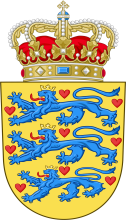Resource information
The purpose of the Act is to help to protect nature and environment in order for society to develop on a sustainable and to preserve animal and plant life. It applies to all activities in relation to pollution, such as deployment of solid, liquid or gaseous substances; air, water, noise, soil and subsoil pollution; husbandry, pests and other factors causing hygienic problems to the environment. Administration of the Act must be focused on achievable and available techniques, processes and systems with the goal of preventing pollution through the implementation of cleaner technology.The Act consists of 14 Chapters: Purpose (1); General provisions (2); Protection of soil and groundwater (3); Protection of surface water (4); Contaminating activities (5); Waste (6); Recycling and clean technology (7); Expropriation (8); Monitoring (9); Administrative rules (10); Appeals and actions (11); Environmental Appeal Board (12); Penalties (13); Entry into force and transitional provisions (14).
Amended by: Act amending various legislative provisions concerning the recovery of national requirements (No. 284 of 1994). (1994-04-27)



